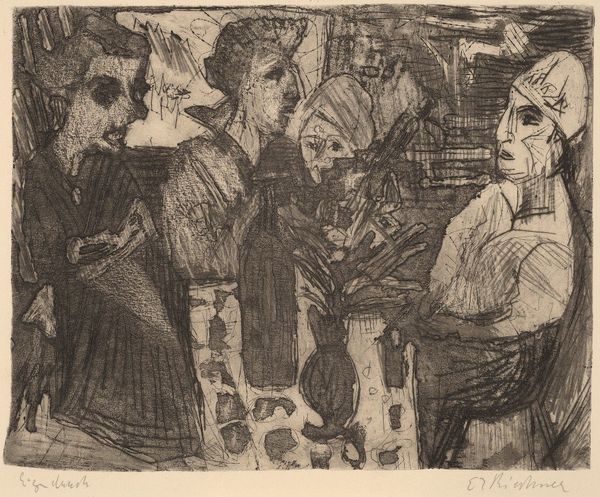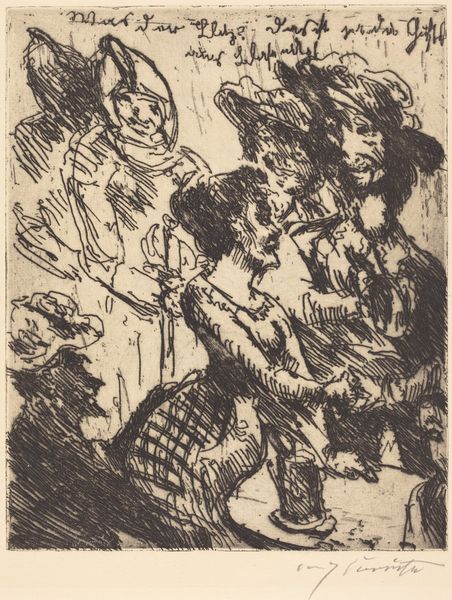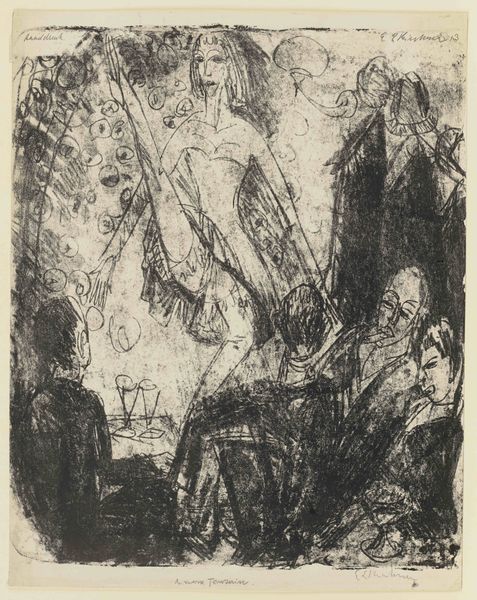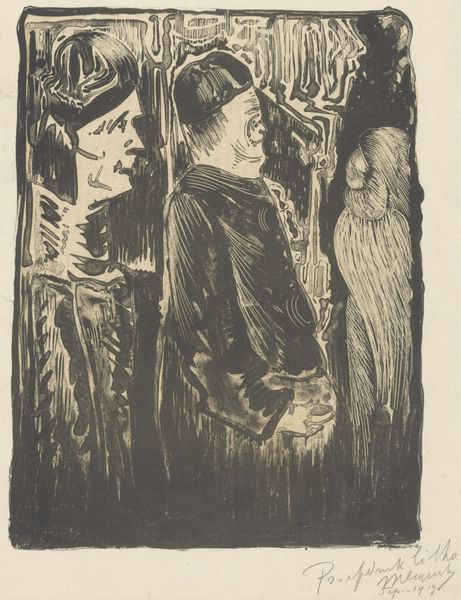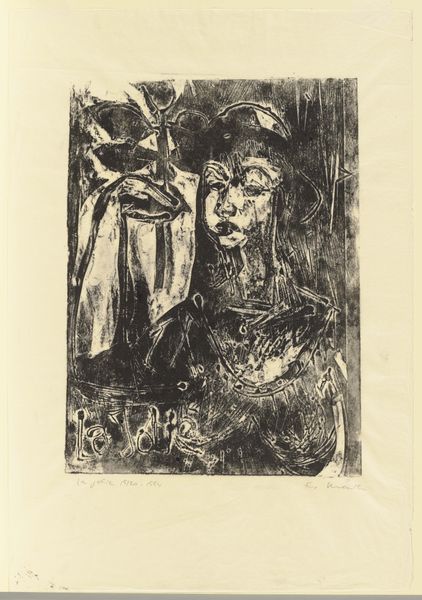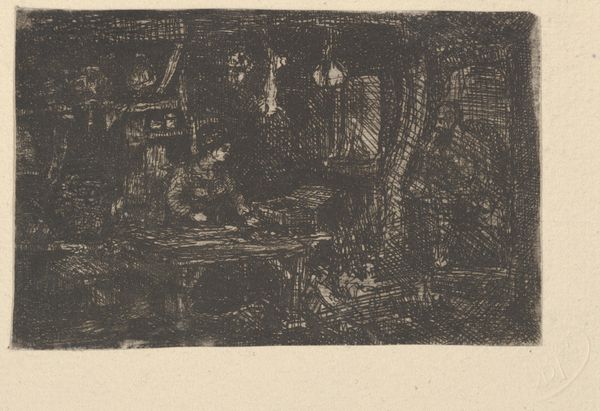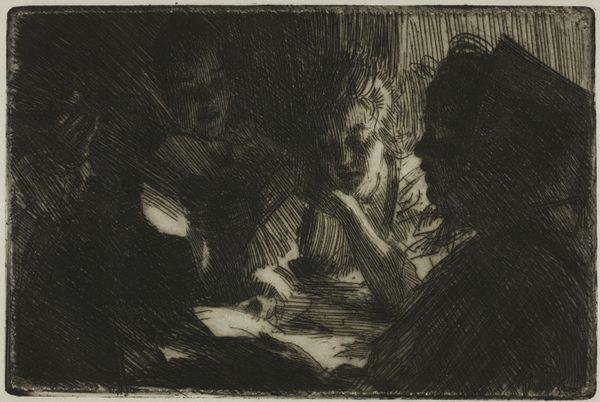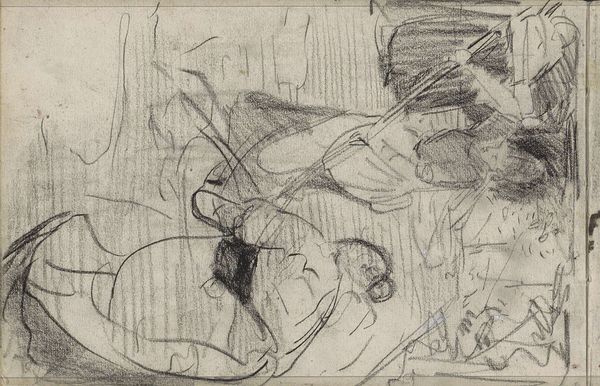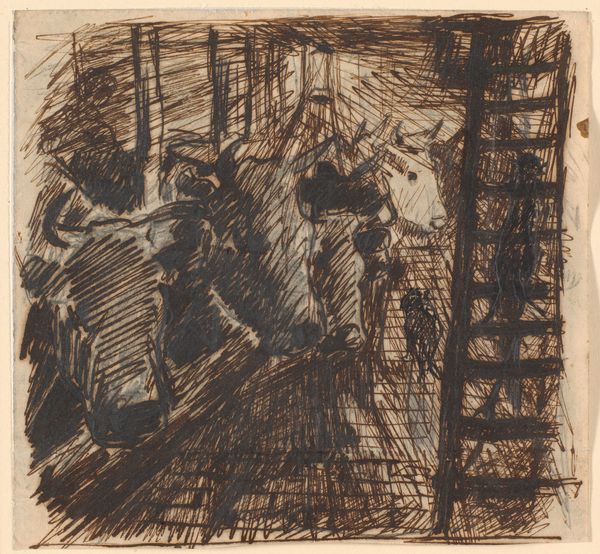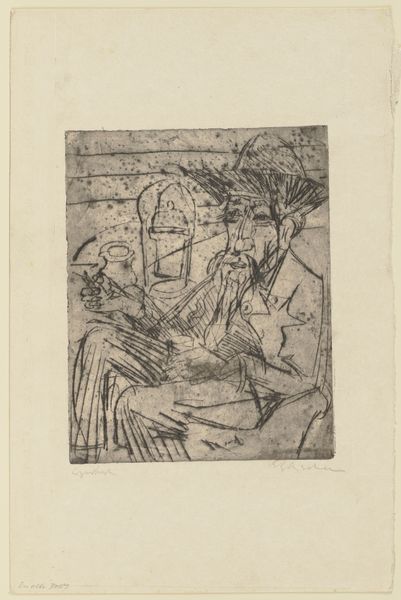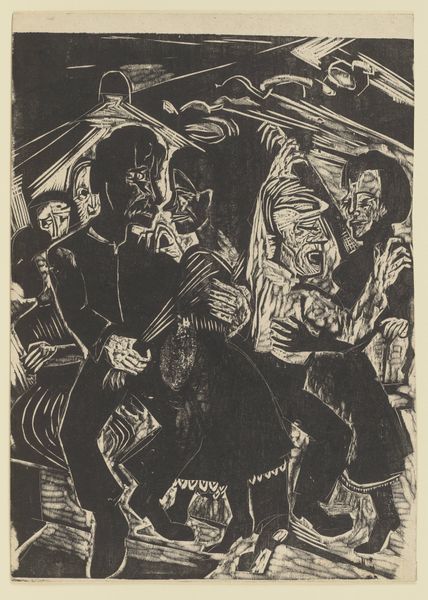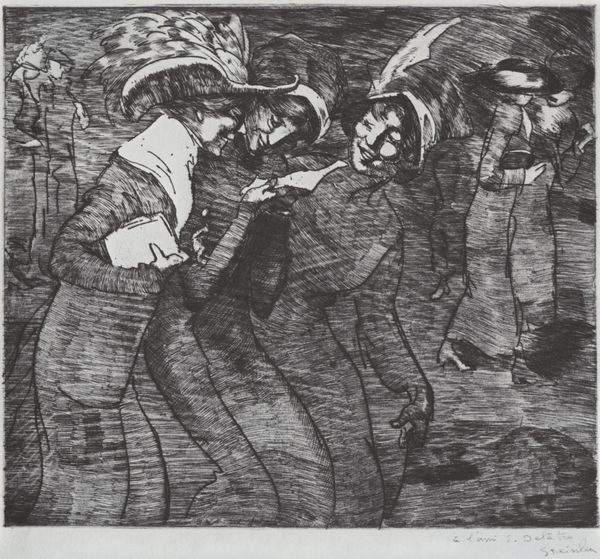
Women at a Table in a Room (recto) / Nude Woman (verso) 1920
0:00
0:00
Dimensions: image: 25 x 31.2 cm (9 13/16 x 12 5/16 in.) sheet: 36.7 x 56 cm (14 7/16 x 22 1/16 in.)
Copyright: National Gallery of Art: CC0 1.0
Editor: Here we have Ernst Ludwig Kirchner's etching from 1920, "Women at a Table in a Room". The stark contrast and the angularity of the figures give it such a tense and almost claustrophobic atmosphere. How do you interpret the composition? Curator: The composition is indeed striking. Kirchner utilizes etching to create a network of dense, intersecting lines. Observe how the lines define the figures, collapsing the space between them and the background. The effect is less about portraying a literal space, and more about the symbolic weight the artist allots the figures. The visual tension arising from the contrasts of light and dark create, precisely, this oppressive atmosphere you identify. Editor: So it's the formal elements, the lines themselves, creating the emotion? Curator: Precisely. Note how the repeated linear patterns deny the eye a place to rest. Consider also the spatial arrangement: the figures are compressed, almost stacked upon one another. Is this meant to represent unease or tension within the group? And how do the hats play into this feeling of density? Editor: I see what you mean; the hats almost blend into the background, furthering the sense of everything closing in. Are the details of each face also important? Curator: Undoubtedly. Observe how each face is uniquely delineated by the etched lines. The eyes are exaggerated, perhaps suggesting anxiety or heightened awareness. Do the sharp, angular lines and stark contrasts challenge traditional portraiture? Is Kirchner focused on internal realities rather than the external world? Editor: That's fascinating. I always thought Expressionism was just about raw emotion, but you're showing me how deliberately Kirchner used the visual language to construct that emotion. Curator: Exactly. Kirchner manipulates form and line to express, not merely represent. And as you reflect, the arrangement itself invites discussion, debate, and dissent about his arrangement decisions. Editor: It seems my understanding was quite superficial, thanks to this formal analysis, the structure helps convey meaning. Curator: It is an evolving engagement. Keep considering the formal choices made by Kirchner and their impact on the emotional resonance of the work, and the ways in which that speaks to you.
Comments
No comments
Be the first to comment and join the conversation on the ultimate creative platform.
